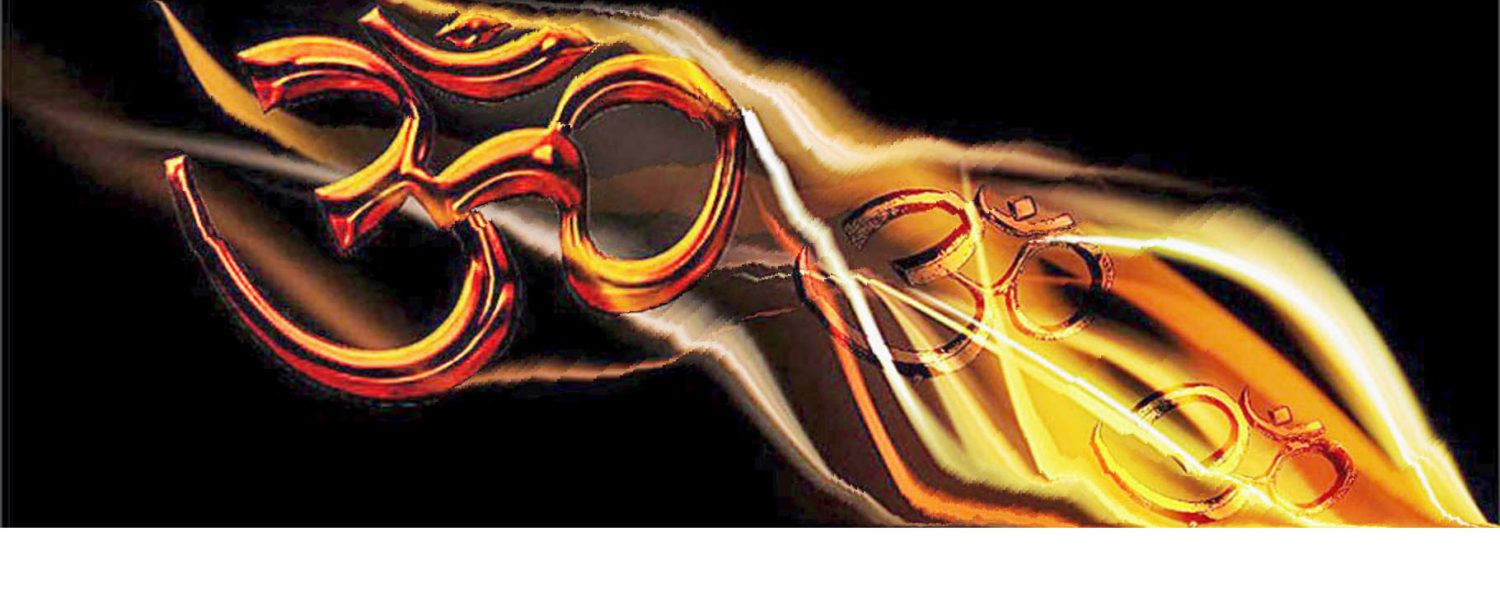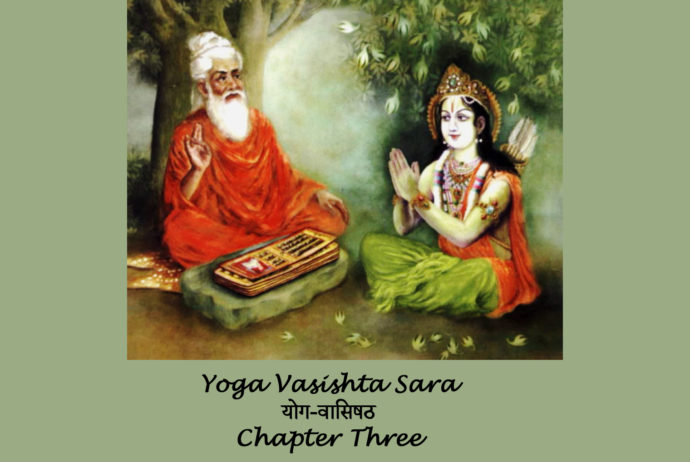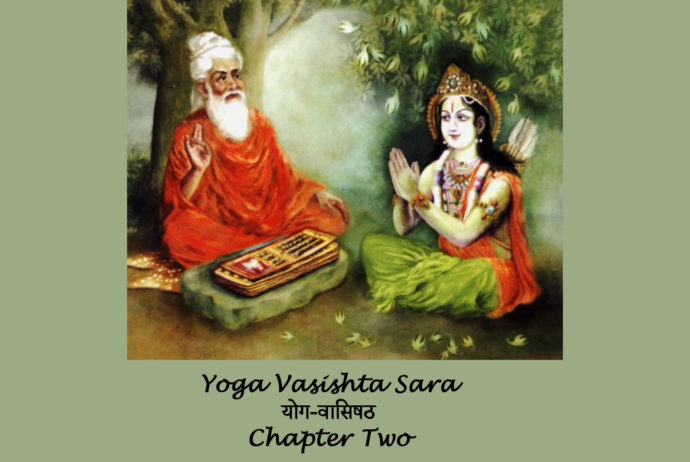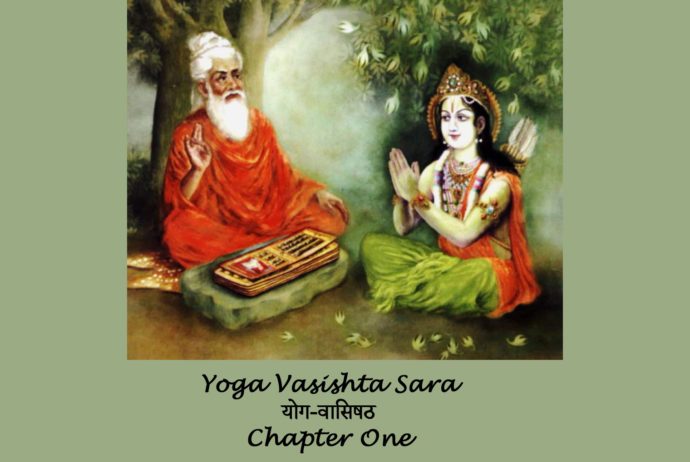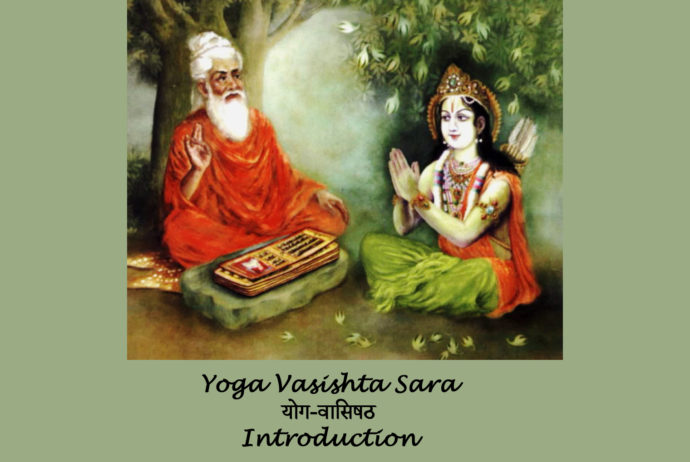Yoga Vasishta Sara – Chapter Three
[योग-वासिष्ठ – Yoga Vasishta is a dialogue between Sage Vasishta and Lord Sri Rama.]
Marks of a Liberated Person
(Jivan Mukta)
1. The knowledge of the Brahman is the fire that burns up the dry grass of desire. This indeed is what is called Samadhi, not mere abstention from speech.
2. He who realizes that the whole universe is really nothing but consciousness, remains quite calm and is protected by the armour of Brahman. He is happy.
3. The Yogi who has attained the state which is beyond everything and remains always cool as the full moon is truly the Supreme Lord.
4. He who reflects in his innermost heart upon the purport of the Upanishads dealing with Brahman and is not moved by joy and sorrow, is not tormented by Samsara.
5. Just as birds and beasts do not take shelter on a mountain on fire, so also evil thoughts never occur to a knower of Brahman (Pure Self).
6. Wise men also, like foolish men, occasionally make others angry; but they do so only in order to test their ability to control their innate feelings.
7. Just as the trembling of the body caused by the imaginary snake persists for some time even after realizing that there is no snake, so also the effect of delusion persists for some time even after getting rid of all delusions.
8. Just as a crystal is not stained by what is reflected in it, so also a knower of truth is not really affected by the result o£ his acts.
9. Even while he is intent on outward actions, the knower of Truth always remains introverted and extremely calm like one asleep.
10. Firmly convinced of non-duality and enjoying perfect mental peace, Yogis go about their work seeing the world as if it were a dream.
11. Let death come to him, the knower of Truth, today or at the end of aeons; he remains untarnished like gold buried in mire.
12. He may cast off his body at Kashi (Sacred Benares) or in the house of a debased person. He, the desireless one, is liberated at the very moment he attains knowledge of Brahman.
13. Oh Rama! To one who is desireless, the Earth is as insignificant as the hoof-print of a cow, Mount Meru a mound, Space as much as contained in a casket and the Three Worlds a blade of grass.
14. Like an empty vessel in space, the knower of Truth is empty both within and without, while at the same time he is full within and without like a vessel immersed in the ocean.
15. He who neither likes nor dislikes the objects seen by him and who acts in the world like one asleep, is said to be a liberated person.
16. He who is free from the knots of desires and whose doubts have been set at rest is “liberated even when he is in the body”(Jivan Mukta). Although he may seem to be bound he is free. He remains like a lamp in a picture.
17. He who has easily cast off, as if playing in sport, all his egoistic tendencies and has abandoned even the object of meditation, is said to be liberated even when he is in the body.
18. He who does not, like one blind, leaves behind his relatives, who dreads attachment as he would a serpent, who looks upon sense enjoyments and diseases alike, who disregards the company of women as he would a blade of grass, and who finds no distinction between a friend and a foe, experiences happiness in this world and the next.
19. He who casts away from his mind all objects of perception and, attaining perfect quiescence, remains still as space, unaffected by sorrow, is a liberated man; he is the Supreme Lord.
20. The noble-hearted man whose desires of the heart have come to an end is a liberated man; it does not matter whether does or does not practice meditation or perform action.
21. The idea of Self in the non-Self is bondage. Abandonment of it is liberation. There is neither bondage nor liberation for the ever-free Self.
22. If by perceiving that the objects of perception do not really exist, the mind is completely freed from those objects, and there ensues the supreme bliss of liberation.
23. Abandonment of all latent tendencies is said to be the best, real liberation by the wise; that is also the faultless method of attaining liberation.
24. Liberation is not on the other side of the sky, nor is it in the nether world, nor on the earth. The extinction of the mind resulting from the eradication of all desires is regarded as liberation.
25. Oh Rama, there is no intellect, no ignorance, no mind and no individual soul (Jiva). They are all imagined in Brahman.
26. To one who is established in what is infinite, pure consciousness, bliss and unqualified non-duality, where is the question of bondage or liberation, seeing that there is no second entity?
27. Oh Rama, by its own activity, the mind has bound itself. When it is calm, it is free.
